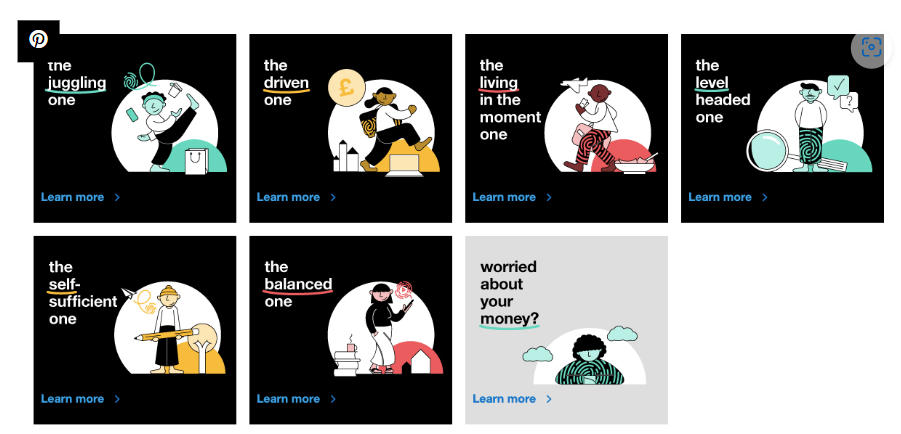When you think of a PR campaign, you might immediately think of ‘traditional PR’ and images of articles in print newspapers (actual paper!), radio ads and even crisis management strategies could flash through your mind.
But the way your potential customers now consume information about a product or a brand has changed, and so have effective PR tactics. Effective PR now comprises data driven, digital, and most importantly – inbound PR strategies. PR professionals must now curate a brand’s first impression by ensuring topical, original and educational content is in relevant locations and easy for target audiences to find online. By executing effective inbound PR strategies, brands can build awareness, promote services or products whilst presenting a credible, trustworthy and positive message for their audience.
For example, getting brand content on high-ranking websites that already benefit from Google’s ever-changing algorithms, means effective inbound PR strategies will help consumers find your content, just when they need it, encouraging them to engage with your brand and keep it front of mind.
The traditional, storytelling PR skills of old, combined with new ways of engaging and interacting with consumers means that a well-planned, intricately researched and original inbound PR campaign can cut through the swaths of online noise and deliver real results.
Here are 10 tips that will help set your next PR campaign apart from the rest.
1. Set out clear objectives and goals
Before anything else, it’s so important that you set out clear objectives and goals for your PR campaign. Not only that, but there should be an agreement amongst stakeholders of one source of truth as to what these goals and objectives look like and how they will be measured. So many companies ‘do PR’ just because they think it’s something they should be doing, without any real strategy sitting behind it. Teams should be asking themselves right at the planning stage, what is our aim with this PR campaign or piece of activity? What does success look like? Do we want brand awareness or reach, or do we want to gain a certain number of links for SEO purposes? What does success look like for this campaign?
Importantly too, consideration should be paid to how a particular PR campaign fits into the bigger picture. How will the success of a PR campaign support a brand or company’s bigger, more strategic goals and how does it fit in or complement other marketing and PR activity already live or planned?
Not only will asking these questions help plan a professional and organised campaign, but it will also ensure a campaign is targeted well, with a clear message for those key people the campaign is trying to reach.
Adrian Falk states for Forbes that “once your goals are established, they will determine your target audience and also the platforms you can best reach them on”.
2. Create a PR calendar
A PR campaign can come unstuck without a schedule. If you don’t have a timeline working back from a launch date, things can get messy and stressful. Use a shared calendar or similar tool to plot all the actions and things that need to take place before launch, with realistic timespans and key check in points along the way. Use prioritisation techniques too so you can mark out all the important aspects of your campaign which will help it stay on track.
A good calendar will help you avoid any last-minute all-nighters and rushes to get things live – this is when mistakes happen. A strong PR plan and calendar will help you track progress on the biggest to the smallest elements of your campaign to ensure nothing is overlooked and everything and everyone works seamlessly towards one goal.
3. Know your target audience
Once you have identified your goals and KPIs, it’s time to turn your efforts to your audience. Who do you want to reach with your content, and what do you want them to do after engaging with it?
It’s worthwhile doing some demographic research to sort your audience into specific personas to enable to you deliver a focused and targeted campaign. When pulling together your audience personas consider things such as buying habits, key pain points, sources of information and influences, as well as location, age, gender, etc.,. Remember, one size doesn’t fit all, so it may be that you have 2-3 different personas and you may need to tweak your message slightly to really speak to each one. This flexibility will help ensure maximum coverage and impact because you are making it as relevant as possible to each audience group.
Kinga Edwards for MediaToolkit gives a great example of a First Direct campaign that used personas within their actual content to truly speak to each and every audience group. The campaign identified six distinctive ‘Money Types’ of people who save, spend, and manage their wealth in different ways and engaged with each of them through a quiz.

The goal of this PR campaign was to help improve the nation’s financial wellness and make people feel more confident with money. This was a great campaign as First Direct’s key customers could see themselves in one of these ‘Money Types’ and then understand the motivations that push them to make decisions about money. The content really spoke to each and every one.
4. Identify key platforms
Once you’ve identified your target audience, research the types of content they consume and where they consume it. This will help you curate your content to ensure it is not only relevant to your target audience but will also be more likely to be picked up by the key channels they use to consume information. The more aligned your content is to an outlet’s style, the more likely it will be to use it. Don’t be afraid to produce different pieces of supporting copy for maximum relevancy to ensure it hits the mark each and every time.
5. Scan the market
It’s important to understand the market or topical conversations within a particular industry so you can see how your campaign fits into broader conversations at any specific time. This research will help you identify market trends and formulate a plan for countering potential negative reactions.
This research can also provide valuable insight into gaps in the market and inform you of upcoming opportunities. Importantly, you will also be able to spot market risks and issues that will help guide your future decisions.
6. Network and influence
No-one likes a cold call. In fact, the very basics of PR and marketing teach that a warm lead is much more likely to convert, than a cold one. In fact, the warmer the better. A key part of any successful PR campaign is building relationships with journalists, bloggers, influencers and other contributors. This doesn’t happen overnight either. These relationships need to be nurtured over time so that when the time comes for you to outreach your piece of killer content, the journalist recognises your name in an overcrowded inbox – this familiarity can go a long way.
Identify some key contacts at your ideal media outlets. Get to know the type of content they usually publish and their style so you can ensure any content you produce with the aim of securing a placement on their outlet hits the spot. Take an active interest in what they are writing about and engage with them if they post their content on social media. At the very least, an introductory email introducing yourself and your brand, as well as asking for a steer on the type of content they might be interested in, will go a long way in kicking off a long and hopefully mutually beneficial relationship.
Laurie Davis for Agility PR advises PRs to be patient too. “Investing time and energy into your media relationships is an important responsibility for PR professionals. Relationships take time and you never know when the right news or spokesperson will get you in the door with a reporter. So don’t give up….Your perseverance will pay off.”
7. Write a great pitch
Having a great pitch is one of the most important things you can do. Even if you have a good relationship with the journalist you’re pitching to (see tip 6!) you still need to captivate them with an intriguing subject line and informative and catchy pitch that’s original and newsworthy.
Adrian Falk for Forbes says, “Don’t be lazy and send out a press release to several journalists on the same email because most will ignore it. In your pitch, make sure to identify the media outlet by name and, if possible, the journalist as well. A personalized pitch shows that you are organized and that you put time and effort into your outreach.”
8. Check, double check and execute
So, your campaign is ready to go, but there is still one more step you need to take before you go live. Check and then double check that everything is on-brand and all the details are correct. Have a senior stakeholder who has been engaged from the very planning stage give everything a final once over before you hit send. If you have regular review milestones as part of your PR calendar or plan, this final check should be a breeze!
9. Re-purpose
The piece of content you are pitching out to media outlets should also be re-purposed for your own channels. Website blogs or opinion pieces, social media posts, whitepapers, videos, eBooks, local media coverage or even including the content in company newsletters to clients, are all perfect opportunities to re-purpose your content for a slightly different audience. Using you own channels to promote your content and generate leads, rather than relying solely on the media as your intermediary to drive awareness for you is an opportunity you really shouldn’t pass up!
Caroline Forsey for HubSpot states, “If your campaign is successful, you’ll likely see an increase in visits to your website. Capitalise on this increased traffic by writing your own blog post, detailing the same information you wrote in your press release. This will enable your business to provide relevant information to people who want to learn more about your campaign and the services you provide.”
10. Measure, learn, adapt
When you’ve spent considerable time, money and effort on a PR campaign, you should understand, in detail, what has worked well and what hasn’t. Go back to the goals and success measures you set right back at the beginning of the campaign and review how well you have achieved these things. Where you feel aspects have underperformed, try to understand why, so you can learn and adapt next time.
However, don’t leave all of this measurement right to the end. You should be keeping a close eye on successes and failures throughout the duration of your campaign so you can jump on things that aren’t working so well and of course celebrate when you get a mid-campaign win!
Running a successful PR campaign takes A LOT of effort and time, but, if time and preparation is put in it really can make the difference and give your PR campaign a rock-solid foundation. Afterall, a PR campaign is promoting your brand and its reputation so it is worth carefully planning, researching, monitoring and learning to maximize its impact. Every brand is different, and no one PR campaign is the same, but these 10 tips provide a framework that can be applied to any PR campaign to set it up for success.
Get in touch with the Media Matters team to discuss your PR needs and let’s see how we can work together to build your brand the perfect inbound PR campaign!





